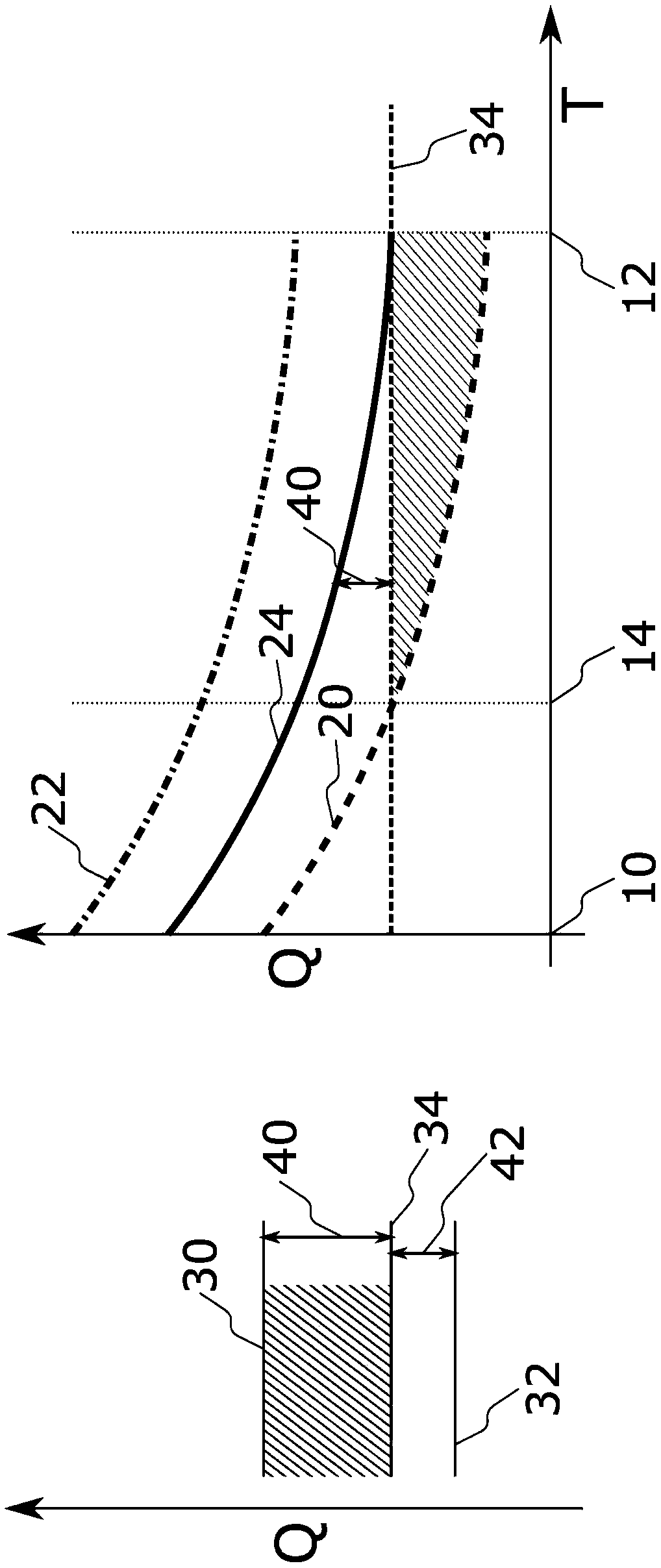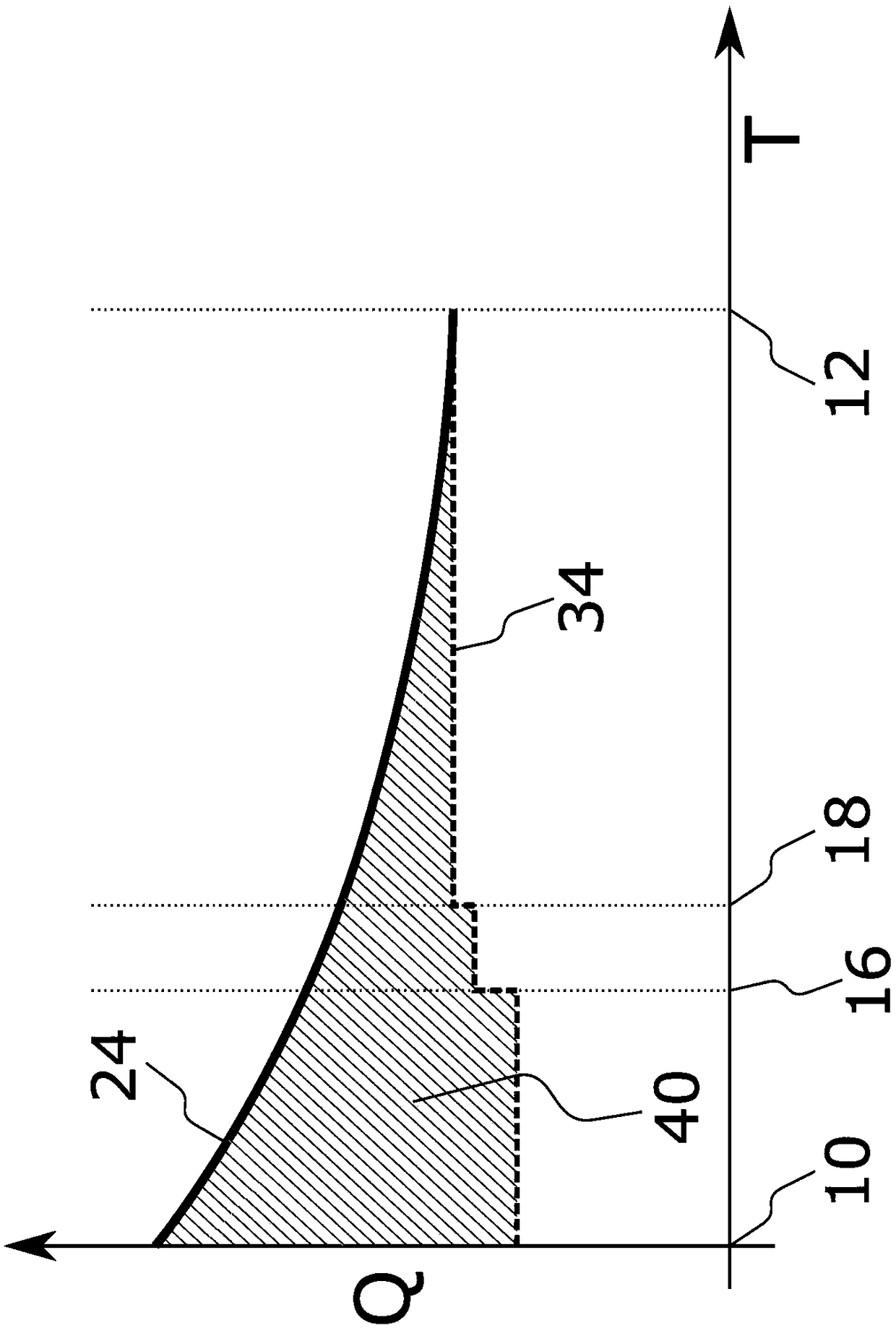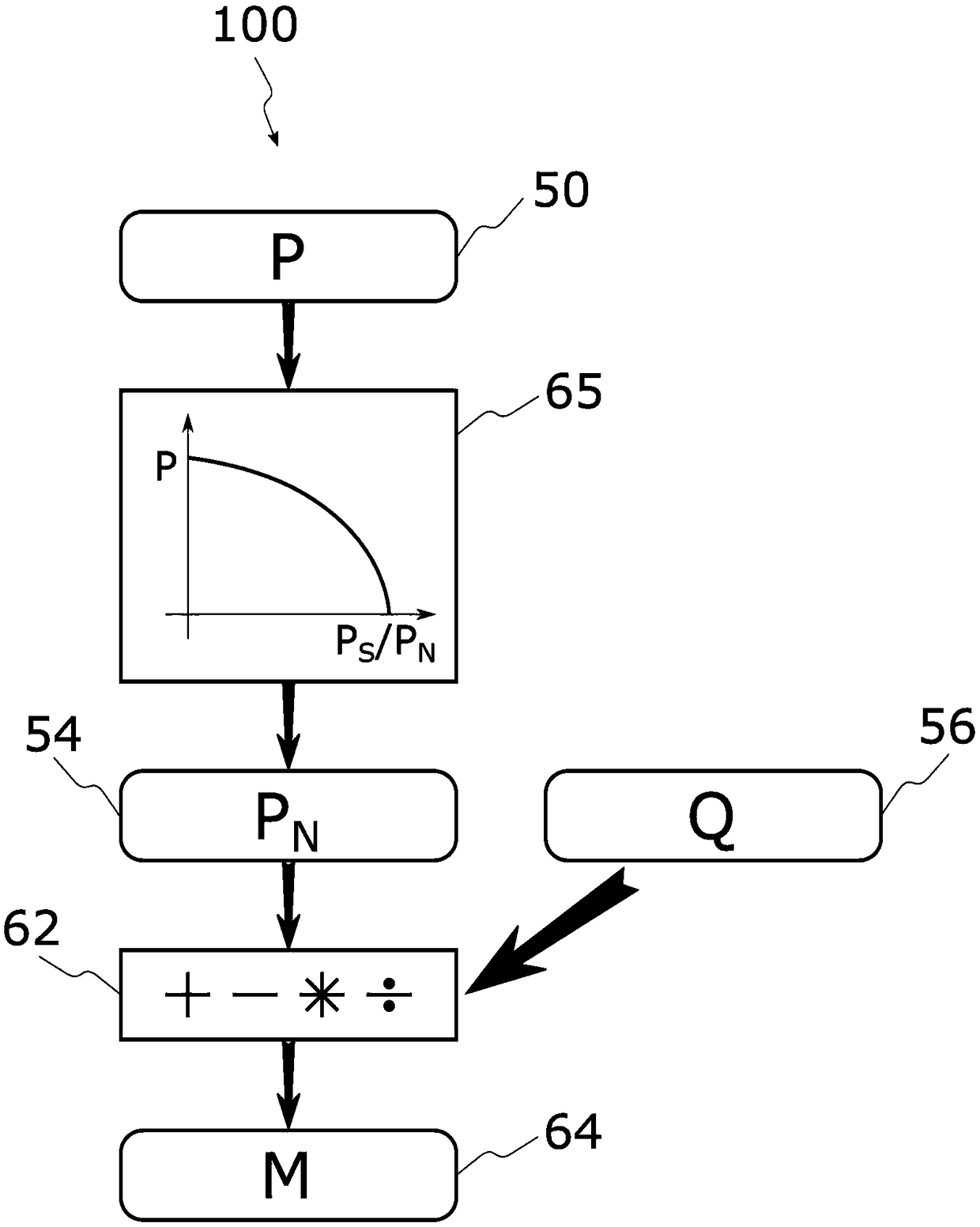Determination of channel osnr and channel osnr margin at real network conditions
An optical transmission network, practical technology, applied in electrical components, electromagnetic wave transmission systems, transmission systems, etc., can solve the problem of not giving an estimated optical signal-to-noise ratio margin, etc.
- Summary
- Abstract
- Description
- Claims
- Application Information
AI Technical Summary
Problems solved by technology
Method used
Image
Examples
example 1
[0096] According to a first example, the performance value P may correspond to the BER before FEC related to the total noise power on the optical link for the channel under consideration, i.e. to the secondary noise power value P according to the predetermined relationship F N , so that the auxiliary noise power value P N The value of is mapped to the value of the performance parameter P:
[0097] F:1 / N→P, where
[0098] where P S represents the signal power at the receiver of the channel under consideration. The predetermined relationship can then be reversed to map any pre-FEC BER measurement (i.e., any performance value) to a corresponding secondary noise power value P N :
[0099] f -1 :P→1 / N
[0100] The OSNR correlation value Q can be measured by the OSA. Subsequently, the auxiliary noise power value P due to ASE can be obtained from N The corresponding contribution of , which is the only one detectable by OSA:
[0101]
[0102] Because in this case the O...
example 2
[0117] According to the second example, two performance values (P 1 ,P 2 ).
[0118] Under a first operating condition, eg for a first value of signal power, a first performance value P is obtained 1 , and said first performance value corresponds to the BER before FEC related to the total secondary noise power on the optical link for the channel under consideration, i.e. corresponds to the first secondary noise power value P according to the predetermined relationship F N1 , so that the first auxiliary noise power value P N1 The value of is mapped to the value of the first performance parameter P 1 :
[0119] F:N 1 →P 1 ,in
[0120] Under a second operating condition, eg for a second value of signal power, a second performance value P is obtained 2 , and said second performance value corresponds to the BER before FEC related to the total secondary noise power on the optical link for the channel under consideration, i.e. corresponds to the second secondary noise p...
PUM
 Login to View More
Login to View More Abstract
Description
Claims
Application Information
 Login to View More
Login to View More - R&D
- Intellectual Property
- Life Sciences
- Materials
- Tech Scout
- Unparalleled Data Quality
- Higher Quality Content
- 60% Fewer Hallucinations
Browse by: Latest US Patents, China's latest patents, Technical Efficacy Thesaurus, Application Domain, Technology Topic, Popular Technical Reports.
© 2025 PatSnap. All rights reserved.Legal|Privacy policy|Modern Slavery Act Transparency Statement|Sitemap|About US| Contact US: help@patsnap.com



